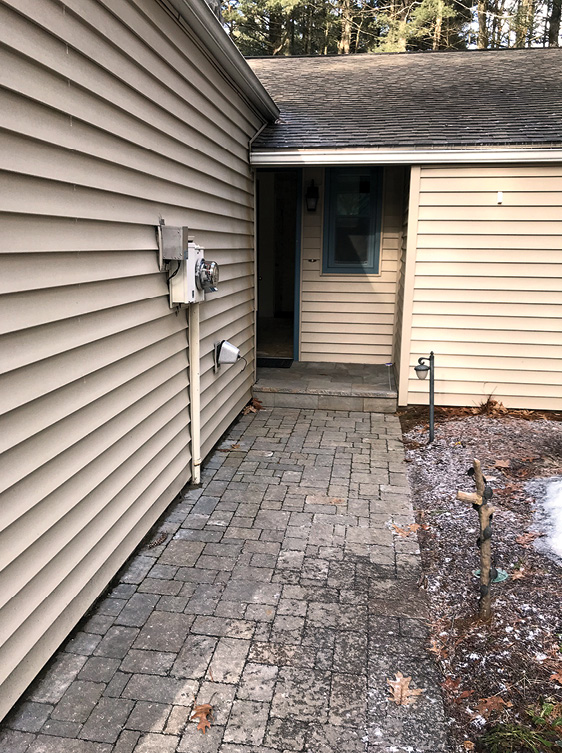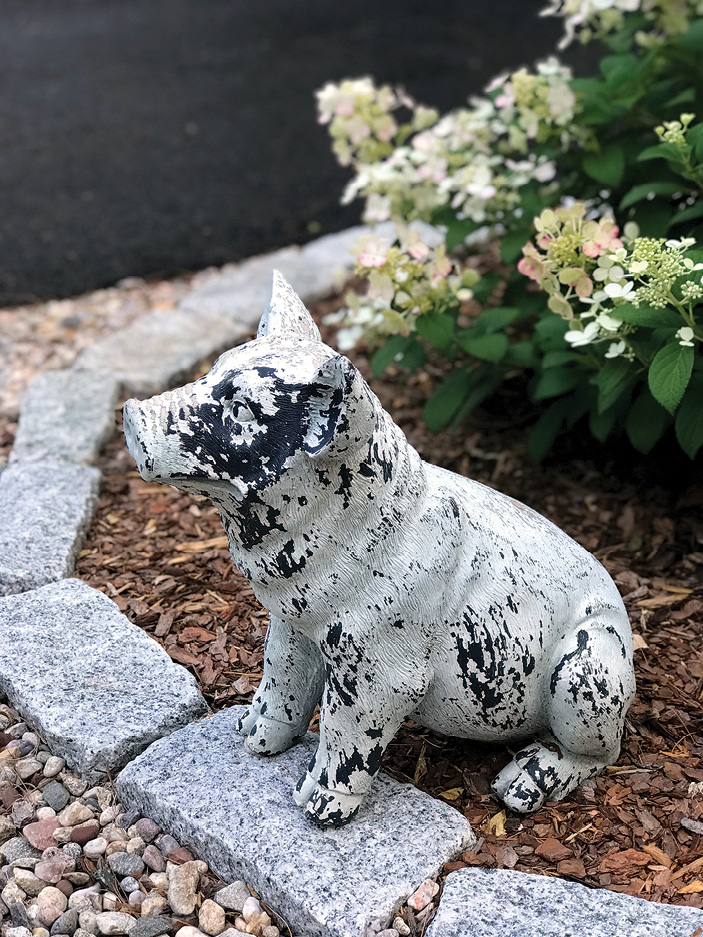Our House
I’ll light the fire, you place the flowers in the vase that you brought today
Staring at the fire for hours and hours….
Our house is a very, very, very fine house with two cats in the yard,
Life used to be so hard,
Now everything is easy ‘cause of you.
—Our House songwriter: Graham Nash; Producers: Crosby, Stills and Nash
Our House became one of Crosby, Stills and Nash’s top 10 songs after its debut in 1970. No wonder: it tapped into our very human desire to have a safe and welcoming retreat to come home to.
When it actually comes to making that big purchase, square footage and number of bathrooms, the state of the roof and how old the furnace is become considerations. You can bring the cats and plant the flowers, even buy a house with a fireplace, but you must have a clear deed, safe electrical wiring and skylights free of leaks. Basics in place, one begins to make a house a home.

The author’s house, December 2018
My House
When I moved to Granby a year ago, I purchased a small home that met all my needs and most of my wants. It had a private back yard and a wood-burning fireplace. I didn’t have two cats for the yard but my cat Lily preferred it that way. The flowers came with spring and summer.
I did not know that I had a snout house, did not know there was such a thing as a snout house, until I googled something along the lines of “improving front of house with protruding garage”. Up came “Curb Appeal for a ‘Snout House’.”
The Snout House Arrives
As moderately-priced developments began to come on the housing scene in the second half of the twentieth century, there was a need to somehow minimize homes in order to fit them on narrow lots. Thus the garage became grafted onto the front of the main facade, often onto the living room wall. A family of moderate income, who could not afford to own a large lot, now had access to affordable house cum garage in one compact structure.
Transforming the front entrance

February 2, 2018

July 4, 2018

August 4, 2019
Meet the Snout House, a style of dwelling whose curb view presents a garage attached to and extending from the main body of the house towards the street. In early days of developments containing rows of snout houses, the garage could take up a large proportion of the street frontage, often squeezing out the possibility of designing an attractive front yard. Typically, the entrance walkway hugs the side of the garage wall on the way to a front door which is tucked behind the garage extension.
While not readily recognized by its less than aesthetic porcine name, the snout house is indeed a type of home construction. Realtors will likely list these houses as “ranches” (what realtor would say, “I have a very nice snout house to show you?”). Similar to ranches, snouts are one-level living, some built on a slab, some with basements. The garage configuration, however, sets them apart from the typical ranch where the garage is set to one side, allowing full display of front door and flanking windows.
Front Entrance Inspiration
Snouts built on a slab (as mine is) exhibit various extruding pipes and a meter box mounted on the side of the garage that one rubs shoulders with on the way to the front door. These unsightly items result when the heating system must be accommodated in the garage, with respective appendages being tacked on the outside wall.
Improving the entrance became an early-on crusade. The happy-ending solution: reconfiguring the front walkway into a gracious curve provided a half-moon garden space whose background plants chosen for height (such as hollyhocks and hyssop) go far to distract from, if not totally camouflage, the garage wall.
Snout Houses in my neck of the woods
There are nine snout houses in my neighborhood. They sit on comfortably-sized lots, scattered among differing style homes throughout the neighborhood. All nine dwellings were constructed between 1973 and 1975 by Vincent Carmine Giuliano of Giuliano Construction (Hartford) who passed away in January of this year. According to his obituary, he was a “prolific” general contractor, overseeing the construction of many apartment and office buildings as well as housing developments in the greater Hartford area.
Although the nine homes in our neighborhood share the same construction, Giuliano situated them pleasingly on each lot, allowing for ample driveway and spacious front yard. Differing colors of paint, trim and roof give each its own personality. In addition, the many years since construction has resulted in fully mature landscaping, contributing further to individuality. Owners have planted trees and gardens, added decks and porches and incorporated hardscaping to make these homes their own. Comfortably informal and inviting, these nine snouts provide superlative homes for their families.
House naming
My British cousins’ homes all have names, such as “The Hollies” and “Lavender Court.” It’s one of those British traditions (think Downton Abbey) that made it over to America despite the revolution. Monticello, Graceland and Fallingwater come to mind (Thomas Jefferson, Elvis Presley, Frank Lloyd Wright respectively). Once the provenance of grand estates and reflective of a family name or of the physical environment, house naming has become popular among the more financially modest. House names these days are apt to be quirky, communicating humor and personal identity.
Online directions are even available as to how to create a catchy moniker, including information on how house names could effect the value of the property and its saleability.
My home is now known as “The Snout House.” A pig sits at the end of the garage welcoming visitors. Mail from my family in Singapore comes addressed to my name, ℅ The Snout House. I’m sure some of my friends and acquaintances find it a bit eccentric. I see it as an affirmation of snout houses in general, and as a grateful gesture to a place of contentment and repose.
